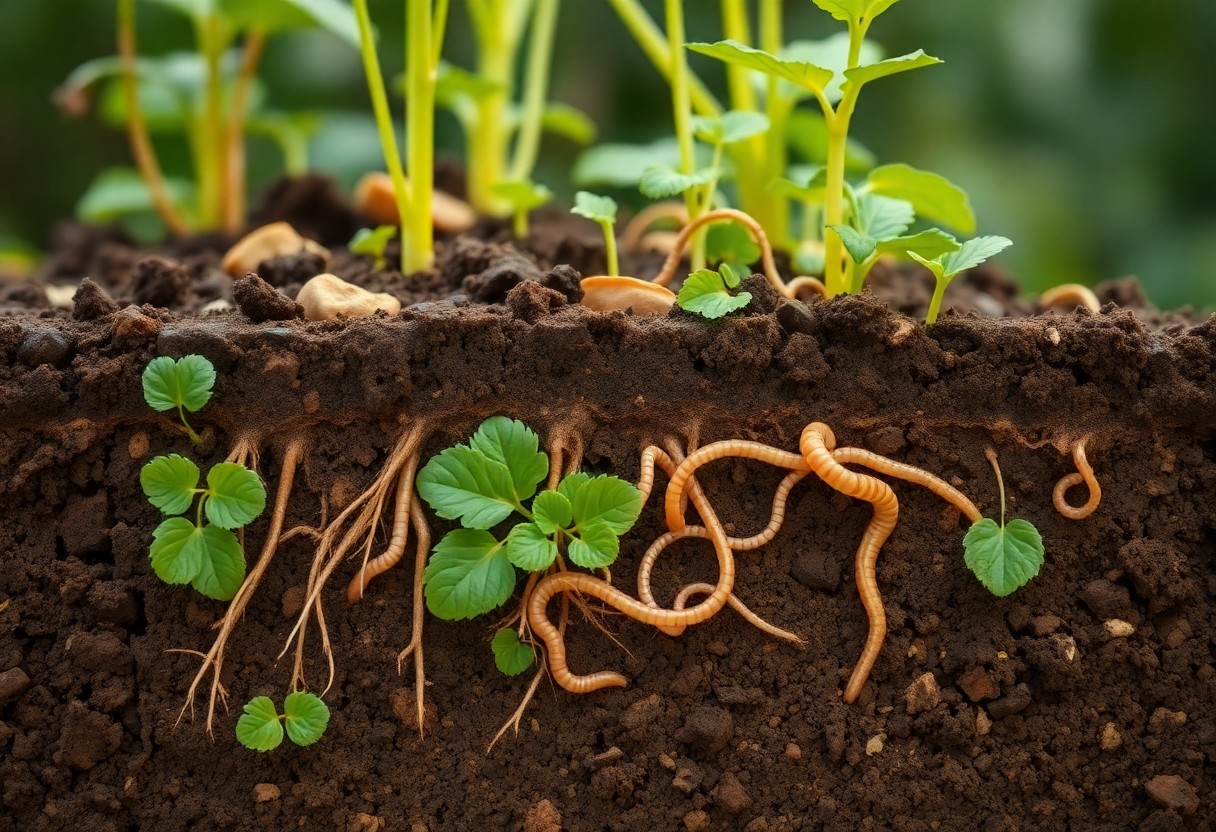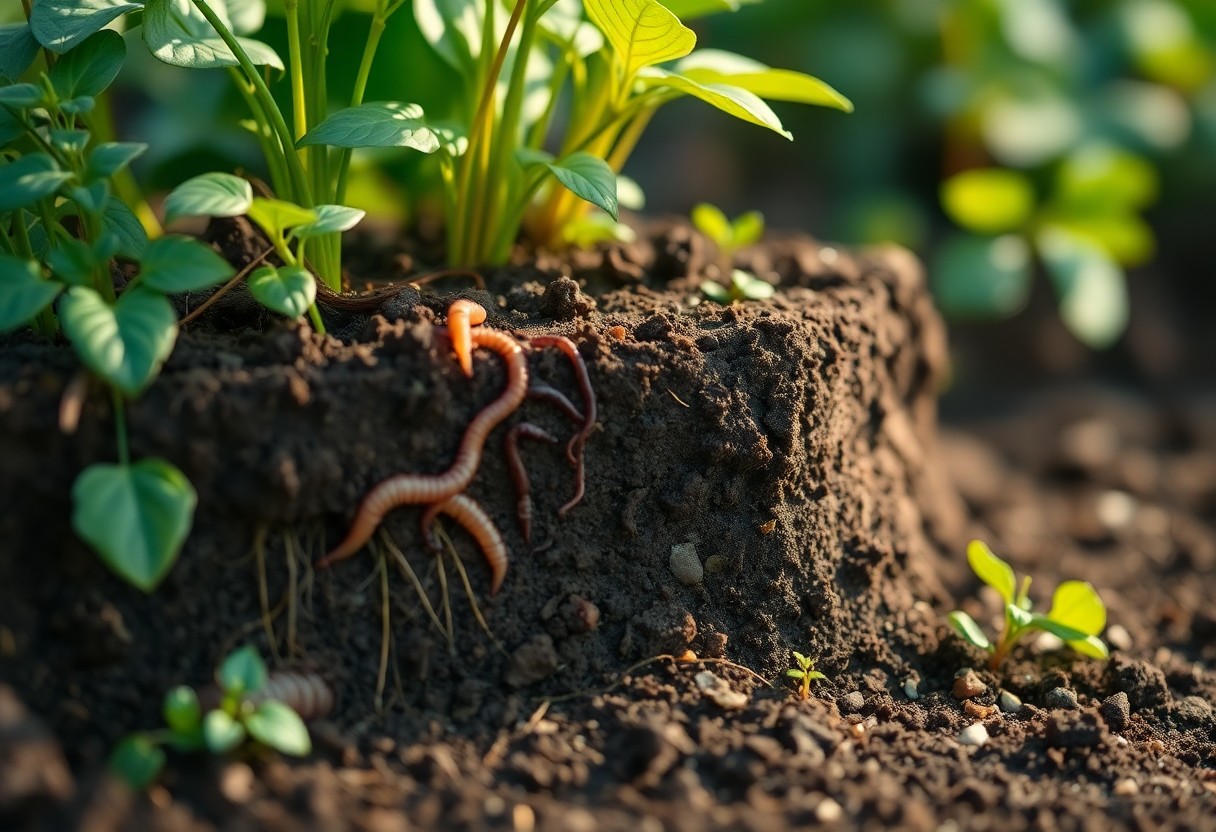Just as a solid foundation is vital for a sturdy building, healthy soil is vital for a thriving garden. Understanding whether your soil is in good condition can mean the difference between lush plants and struggling crops. In this post, you’ll discover five key signs that indicate the health of your garden soil, empowering you to make informed decisions for optimal growth. Whether you’re planting vegetables or flowering perennials, recognizing these signs can help ensure a vibrant and productive garden.

Key Takeaways:
- Healthy garden soil should have a diverse range of organisms, including earthworms and beneficial microbes, indicating good biological activity.
- A well-balanced soil pH, typically around 6.0 to 7.5 for most plants, is imperative for nutrient availability and overall plant health.
- Soil texture and structure play a vital role; good soil should have a mix of sand, silt, and clay, which allows for proper drainage while retaining enough moisture and nutrients.
Importance of Healthy Soil
Before you investigate planting, it’s important to understand that healthy soil is the foundation of a thriving garden. Your plants rely on the soil for nutrients, water retention, and support. When your soil is healthy, it fosters a balanced ecosystem, promoting plant growth while reducing pest and disease issues. By prioritizing soil health, you can cultivate a vibrant garden that not only flourishes but also becomes a sustainable environment.
Nutrient Availability
About the nutrients present in your soil—healthy soil is rich in important minerals and organic matter that plants need to grow. When your soil has the right balance of nutrients, it enhances plant vigor, leading to better yields and improved flower or fruit quality. Testing your soil and amending it when necessary ensures your plants receive adequate nutrition throughout their growth cycle.
Soil Structure and Aeration
At the heart of healthy soil is its structure, which refers to how soil particles are arranged. Good soil structure promotes effective aeration, allowing roots to access oxygen and water efficiently. It also helps with drainage, preventing waterlogging that can damage roots. A well-aerated soil structure enables you to foster a robust root system, critical for your plants’ overall health.
But achieving ideal soil structure and aeration is about more than just texture. It involves a balance of sand, silt, and clay, which contributes to how water permeates the soil. If your garden soil is too compacted, it can hinder root growth and water movement, leading to poor plant performance. Regularly incorporating organic matter like compost can improve soil structure and enhance its ability to hold nutrients and water, creating a thriving environment for your plants.
Sign 1: Presence of Earthworms
Assuming you want to gauge the health of your garden soil, the presence of earthworms is a positive sign. These beneficial creatures aerate the soil, improve drainage, and help with nutrient cycling. If you notice a good number of earthworms in your garden, this indicates that your soil is rich in organic matter and is well-managed. Conversely, if you find very few or none at all, you might face immediate soil health issues that need addressing. Enhancing soil organic content will encourage these helpful allies to thrive in your garden.

Sign 2: Smell of Fresh Soil
The smell of fresh soil is one of the best indicators of a healthy garden ecosystem. When you dig into your soil and notice an earthy, rich aroma, it typically signifies a thriving population of beneficial microbes and organic matter. On the other hand, if your soil emits a foul or sour odor, this can indicate the presence of anaerobic bacteria, which may harm plant growth. Regularly checking the smell of your soil can help you assess its health and determine if improvements are needed to foster a better growing environment for your plants.
Sign 3: Consistent Moisture Retention
You should evaluate how well your garden soil retains moisture. Healthy soil has a good balance of organic matter that helps it hold water, reducing the need for frequent watering. If you notice your plants are wilting quickly or the soil dries out too fast, it may indicate poor soil health. On the other hand, soil that retains moisture effectively will keep your plants thriving and vibrant, ensuring they have enough resources to grow. Achieving this balance may require amending your soil with compost or other organic materials.
Sign 4: Abundant Microbial Activity
Now, if you want to assess the health of your garden soil, pay attention to the microbial activity. Healthy soil should be teeming with microorganisms, such as bacteria, fungi, and earthworms, which play a vital role in nutrient cycling and soil structure. You can check for these signs by digging into the soil; if it feels damp and has an earthy smell, that’s a good indication of active life. If your soil is lifeless or overly compacted, it may struggle to support healthy plant growth and could lead to nutrient deficiencies in your garden.
Sign 5: Healthy Plant Growth
For a thriving garden, healthy plant growth is a key indicator of your soil’s vitality. If you observe that your plants are vibrant, with rich colors and robust structures, it reflects positively on your soil quality. Look for signs of stunted growth, yellowing leaves, or pest infestations, as these may indicate underlying soil issues. Healthy plants will show strong root development and an ability to resist disease. By nurturing your soil, you not only enhance your garden’s beauty but also create a sustainable environment for future growth.
Conclusion
Now that you understand the five key signs of healthy garden soil, you can assess your own growing environment with confidence. By observing the texture, color, smell, drainage, and the presence of beneficial organisms, you’ll be equipped to make informed decisions about improving your soil quality. Healthy soil not only supports your plants but also enhances biodiversity in your garden. Taking the time to evaluate and enhance your soil will ultimately lead to a thriving garden and a more rewarding gardening experience.
FAQ
Q: What are the signs of healthy garden soil?
A: Healthy garden soil has several defining characteristics. Look for a rich, dark color which indicates organic matter content. Additionally, good soil should crumble easily in your hands, demonstrating proper granulation. You might notice a variety of earthworms and other beneficial organisms, as these contribute positively to soil health. Lastly, a pleasant earthy smell can be a good indication of a vibrant ecosystem in the soil.
Q: How does the presence of earthworms indicate healthy soil?
A: Earthworms play a vital role in enhancing soil health. They aerate the soil, improve drainage, and contribute to nutrient cycling by breaking down organic matter. If your garden has an abundance of earthworms, it’s a strong signal that the soil has a good balance of moisture and nutrients, providing a suitable environment for plant growth.
Q: Why is soil texture important in determining soil health?
A: Soil texture refers to the particle size distribution in the soil, which influences its drainage, nutrient retention, and aeration capacity. Healthy soil typically has a balanced mix of sand, silt, and clay, allowing it to retain moisture while also providing sufficient drainage. You can assess texture by taking a handful of moist soil and squeezing it; it should form a loose ball without sticking excessively to your hands.
Q: How can I tell if my soil lacks nutrients?
A: Nutrient-deficient soil often shows specific symptoms in plants, such as yellowing leaves, stunted growth, or poor flowering and fruiting. You may also notice poor root development or an increase in weed growth, as weeds thrive in poor soil conditions. Conducting a soil test can provide precise information on nutrient levels and help you make informed amendments.
Q: What role does soil pH play in garden soil health?
A: Soil pH is important because it affects nutrient availability to plants. Most plants thrive in a slightly acidic to neutral pH range (6.0 to 7.0). If the pH is too high (alkaline) or too low (acidic), certain nutrients can become unavailable, leading to nutrient deficiencies. Testing your soil pH can help you determine if adjustments are needed to create a balanced environment for optimal plant growth.
